Caryatid › Cassander › Tattoos in Ancient Egypt » Origins and History
Articles and Definitions › Contents
- Caryatid › Origins
- Cassander › Who Was
- Tattoos in Ancient Egypt › Origins
Ancient civilizations › Historical places, and their characters
Caryatid › Origins
Definition and Origins
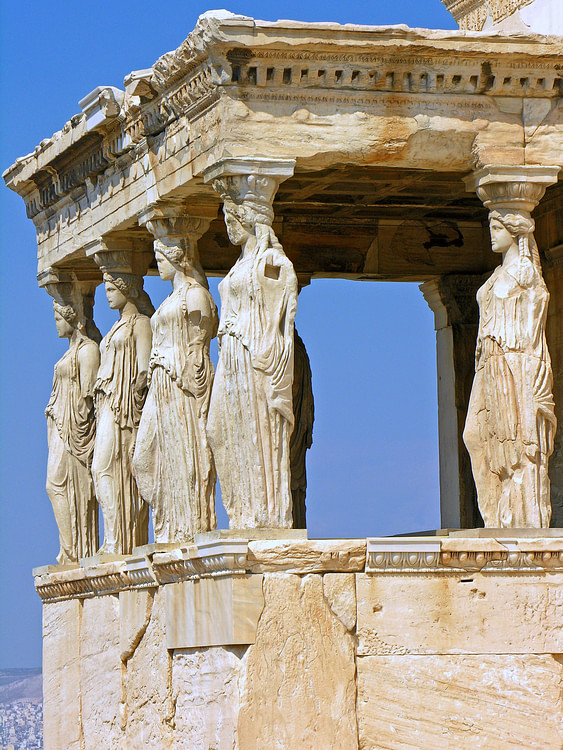
Caryatid is the name given to an architectural column which takes the form of a standing female figure. The first examples come from ancient Greek architecture and indeed, the most celebrated examples are found in the south porch of the Erechtheion on the acropolis of Athens.
NAMING & ORIGINS
The term Caryatid first appears in the 4th century BCE and was coined by Vitruvius in reference to Karyai in Laconia where women often danced balancing a basket on their heads in honour of Artemis and where Caryatids were used in Archaic architecture. They were an evolution of the earlier korai statues of both male and female figures prevalent throughout the Archaic period and used as columns in Ionian architecture. These were themselves an evolution of Persian columns which often employed animal figures within the column design.
THE MOST FAMOUS CARYATIDS ARE THE SIX WHICH SUPPORT THE ROOF OF THE PORCH OF THE ERECHTHEION ON THE ATHENIAN ACROPOLIS.
Archaic Caryatids were usually used in the porches of Treasury buildings which were built to house offerings from specific states at religious sanctuaries such as Delphi and Olympia. The most important treasury at Delphi was from the Siphnians (c. 525 BCE) and this and at least two other Treasuries had Caryatids. Caryatids of this period often have a short column drum above the head in order to facilitate the join with the column capital.
THE ERECHTHEION
The most famous Caryatids are the six which support the roof of the false south porch of the Erechtheion on the Athenian acropolis. This building was constructed between 421 and 406 BCE as part of Pericles ' great project to rejuvenate the architecture of the great city. The Erechtheion was built to house the ancient wooden cult statue of Athena but also served as a centre for the cults of Erechtheus (a mythical king of Athens), his brother Boutes, Hephaistos and Poseidon. The Caryatids display features which would become staple elements of Classical sculpture: clothes which cling to the body (the 'wet look') and a bold and more dynamic positioning of the hips and legs. Although each Caryatid wears the same robe - a belted Doric peplos and short himation - each is uniquely rendered, a feature particularly noticeable in their intricate plaited hairstyles (best seen from the rear). The arms of the figures have unfortunately been lost but Roman copies show them holding in their right hands phialai - shallow vessels for pouring libations - whilst their left hand raised slightly their robe. Scholars believe them to be carved by different artists, most probably from the workshop of Alcamenes, student and colleague of Pheidias.

The Erechtheion, Athens
Interestingly, the porch of the Erechtheion stands over what was believed to be the tomb of the mythical king Kekrops and perhaps the Caryatids and their libation vessels are a tribute to this fact - libations were poured into the ground as an offering to the dead. The Caryatids now on the acropolis are copies, five of the originals reside in the Acropolis Museum of Athens and the other is in the British Museum, London.
Cassander › Who Was
Definition and Origins
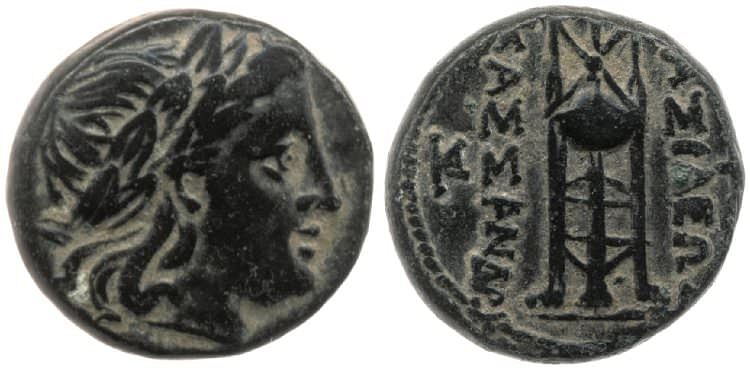
Cassander (c. 355-297 BCE, r. 305-297 BCE) was self-proclaimed king of Macedon during the political turmoil following Alexander 's death. Born in Greece as the son of Antipater, the regent of Macedon and Greece in the absence of Alexander the Great, he ruled beside his father eventually battling against the commander Polyperchon for supremacy in Greece. His alliance with Seleucos I and Ptolemy I against Antigonus I brought him into the Wars of Succession, the battle over the remnants of Alexander's domain. His murder of Alexander's mother and son ended any hope for an heir to the king's empire.Cassander's death in 297 BCE would, for a time, bring stability, but without an heir, his beloved Macedon would fall into the hands of others.
EARLY LIFE
Throughout his campaign against the Persians, Alexander the Great remained aware of the many troubles plaguing his homeland of Macedon. Although the regent Antipater was able to suppress a rebellion staged by Agis II of Sparta, he was unable to prevent Alexander's mother, Olympias, from constantly complaining to his son about the regent's supposed abuse of power. She despised Antipater, and he referred to her as a "sharp-tongued shrew." Finally, Alexander opted to listen to his mother and summon Antipater to Babylon. Believing it to be a death sentence, he chose instead to send his son Cassander.Alexander was not pleased, and the conflict that ensued may have brought about the king's early death.
Cassander and Alexander were not strangers; however, it became obvious many years later that they were not close friends.They were both about the same age and, along with Ptolemy and Hephaestion, students of the great Athenian philosopher Aristotle. Now, the year was 323 BCE, and as Cassander stood before his king intending to make a valiant plea on his father's behalf, he witnessed several Persians prostrating themselves before Alexander - an old Persian custom called proskynesis. His immediate reaction was to laugh. The historian Plutarch in his Greek Lives wrote, "… he could not stop himself laughing, because he had been brought up in the Greek manner and had never seen anything like that before."Alexander grew irate and "grabbed hold of Cassander's hair violently with both hands and pounded his head against the wall " (378). The image of this brutal attack would remain with Cassander for years to come and whenever he would see a statue or painting of the king, he would faint. Plutarch wrote of this malady,
… when he was king of Macedonia and master of Greece, he was walking around Delphi looking at the statues, when he suddenly glimpsed a statue of Alexander and became so terrified that his body shuddered and trembled, he nearly fainted at the sight and it took a long time for him to recover. (379)
ALEXANDER'S DEATH
On June 10, 323 BCE Alexander the Great died. Since that time, arguments and rumors have persisted concerning the possible cause - malaria, an old wound, his alcoholism, or even poisoning. This latter cause was something Olympias wholeheartedly believed. However, the rumor of poisoning, regardless of any direct evidence, brought into the conversation the names of Cassander, his brother Iolaus, Antipater, and even Aristotle. Supposedly, according to rumor, Aristotle, on the orders of Antipater, obtained the poison from a spring that flowed into the River Styx; Cassander carried it to Babylon in the hoof of a mule; and it was delivered to the king by Iolaus, Alexander's cupbearer. Plutarch did not give credence to the poison rumor.Later, Antipater made every attempt to defend himself against the rumors in order to win the hearts of the Greek people.

Alexander the Great
After Alexander's death, the empire he had so fearlessly built fell into chaos. And, while the commander Perdiccas possessed both the king's signet ring and body - the commander Ptolemy would later kidnap the body - no one had been named as either the successor or heir; however, it was accepted that Alexander's child by Roxanne, the future Alexander IV, would one day rule. Alexander's half-brother Arrhidaeus, son of Philip II and Philinna, was named Philip III and chosen to rule as co-regent until young Alexander was old enough to rule alone. Meanwhile, although there was no child to consider, Roxanne, to affirm her status as Alexander's only wife, poisoned Darius ’s daughter (and Alexander's wife) Stateira and threw her body into a well - she also killed the sister Drypetis for no apparent reason. Since the future Alexander IV was yet to come of age, the commanders resorted to arguing among themselves, concerned more with gaining regency over a portion of the empire than appointing a successor.
WARS OF SUCCESSION
At a meeting held in Triparadeisus presided by Antipater in 321 BCE, the vast empire was divided among the various commanders. The more notable assignments confirmed in the agreement were: Ptolemy had Egypt, Seleucus Babylonia, Lysimachus had Thrace, while Antigonus ruled much of Asia Minor. Lastly, Antipater retained his regency over Macedonia and Greece. Alliances were made, and alliances were broken. Over the next three decades, the Wars of Succession brought nothing but chaos and confusion. In the end, Alexander IV, his mother, and even Olympias would be dead, and the once great empire of Alexander would die with them.
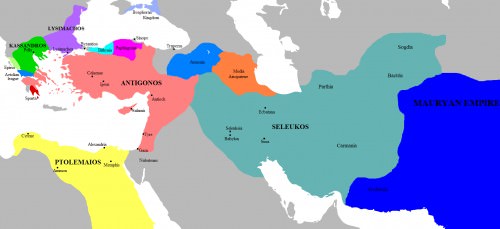
Map of the Successor Kingdoms, c. 303 BCE
Antipater and Cassander realized that their tenuous hold on Greece and Macedonia was not safe. With little recourse, they looked to the other commanders for support eventually forming an alliance with Antigonus the One-eyed. Antigonus has sought Antipater's help after he and Perdiccas argued - Antigonus had refused to help the Perdiccas' ally Eumenes in a fight to retain his territory. Eumenes had been declared an enemy of the state at Triparadeisus and condemned to death. However, Cassander wisely grew to be suspicious of the old commander's intentions. Antipater acknowledged his son's concern, and the two met with Antigonus. According to their agreement, Antigonus lost control of much of his veteran army; they were replaced by newer recruits. When Antipater and Cassander returned to Macedon, Antigonus gathered his forces and defeated Eumenes in 321 BCE. In the same year, Perdiccas would be defeated in a battle against Ptolemy and killed by his own men. Several years later, when Cassander gained control over Macedon and most of Greece, the cagey commander and old veteran would clash. For now, however, he stayed cautious.
CASSANDER AS CHILARCH
Cassander remained loyal to his father to the very end, but when Antipater died in 319 BCE, he failed to name his son as his heir. He felt Cassander too young and inexperienced to rule alone and defend against the other regents. Instead, Antipater named the capable commander Polyperchon. Cassander was named chilarch or second in command. Of course, the two would immediately clash. Something that may have influenced Antipater's decision comes from Cassander's childhood. He had always been a sickly child, and it was a Macedonian custom that a boy had to kill a wild boar without a net to gain the privilege of reclining at a table as an adult. Cassander never did and had to sit upright on his couch even as an adult. Despite his new role as chilarch, Cassander would not remain idle long and sought alliances elsewhere. Eventually, despite his misgivings, he looked across the Hellespont and allied himself with Antigonus.
DESPITE HIS NEW ROLE AS CHILARCH, CASSANDER WOULD NOT REMAIN IDLE LONG AND SOUGHT ALLIANCES ELSEWHERE. EVENTUALLY, DESPITE HIS MISGIVINGS, HE ALLIED HIMSELF WITH ANTIGONUS.
Fearing this alliance, Polyperchon looked southward to the Greek city -states for support, promising them their independence from Macedonian rule; however, they had to promise not to wage war against Macedon. The struggle between the two escalated, centering on the city-state of Athens. Wisely, at the time of Antipater, Cassander had sent an emissary to Athens to ensure the city's loyalty. Later, in 318 BCE, when tensions with Polyperchon escalated, Cassander negotiated with the city, restoring its old oligarchy. To win favor with the city-states, he even rebuilt the old city of Thebes which had been destroyed by Alexander. In 317 BCE, to ensure his hold on the region, the confident Cassander established a base at Pegeus, southwest of Athens. Suffering a major defeat at Megalopolis, Polyperchon became entrapped in the Peloponnese. All the while, he continued to insist that Antipater had given him the regency, not Cassander.
With little hopes of achieving success in the city-states, Polyperchon turned northward, seeking the support of Olympias in Epirus, eventually hoping to march on Macedon, overthrow Philip II and install Alexander IV as king. Regrettably, Philip III and his wife Eurydice (also known as Adea), who had sided with Cassander and appointed him regent, were captured - and, on the orders of Olympias, he would be murdered in 317 BCE - Eurydice would commit suicide.
Despising Cassander as she had his father, Olympias quickly joined with not only Polyperchon but Eumenes as well. However, realizing the inevitable, soldiers once loyal to Polyperchon soon wavered in their support and chose to surrender and join Cassander. Added to the defeat of Eumenes, this abandonment did not help Olympias, Roxanne, and the young Alexander who were now isolated at Pydna. Polyperchon's attempts to contact her by letter or aid in an escape failed, leaving the old queen both hungry and in despair. However, Cassander, although seeking a fair trial stated that he would not harm her, in the end he received the death sentence he had always sought.
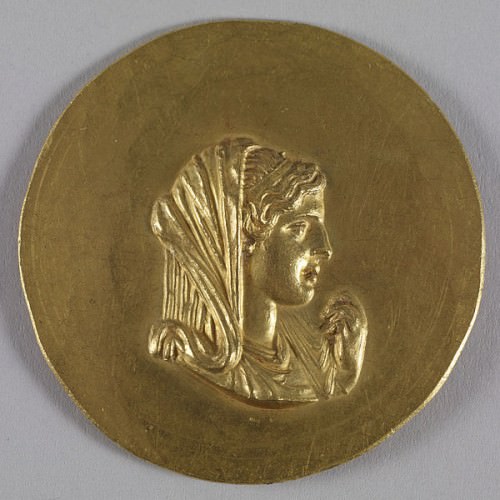
Olympias
In 316 BCE he sent soldiers to kill her, and in fine Olympias fashion, she bled to death while preparing her hair and clothes.With Olympias dead, the young Alexander had no protector. To Cassander he and his mother represented a mixture of races and cultures, and though he considered keeping them as hostages for future possible negotiations, he soon changed his mind.Both Roxanne and Alexander ended their days at Amphipolis in Thrace where they were purportedly poisoned in 310 BCE.He was 13 (possibly 14) and she was only 30.
KING OF MACEDON
By 316 BCE Cassander would be master of Macedon. To ensure his right to the throne Cassander married the half-sister of Alexander, Thessalonica. They would have three children, Philip, Alexander, and Antipater; none of them would survive to follow in their father's footsteps. The disagreement with Polyperchon would finally come to an end. Oddly, it would center on another possible claimant to the throne. The two men met on the borders of Macedon, and before the battle could begin, reached a compromise. Although never honestly considered by any regent, Alexander had a second son, Heracles, by his Persian mistress Barsine. Polyperchon, who would die in 302 BCE, agreed to kill Heracles and, as a reward, was named a major-general in the Peloponnese.
Cassander continued his fight against Antigonus from 315 to 311 BCE, finally reaching a tenuous peace agreement. In 305 he became the self-proclaimed king of the Macedonians, but at the Battle of Ipsus in 301 BCE Cassander, Ptolemy I, Seleucus ( Seleucos I), and Lysimachus would again battle Antigonus I and his son Demetrius I of Macedon. The latter two would be defeated, and the old commander Antigonus would die in battle. Cassander, himself, would die in 297 BCE, and for a while, Macedon was left stable. Unfortunately, without a surviving heir to carry on, his beloved Macedon fell to an enemy, Demetrius.
Tattoos in Ancient Egypt › Origins
Ancient Civilizations
Tattoos are an ancient form of art appearing in various cultures throughout history. One of the earliest (and possibly the oldest) pattern of tattoos in the world was discovered on the frozen remains of the man known as Otzi the Iceman who was buried in a glacier on the Austrian-Italian border c. 3250 BCE and discovered in 1991 CE. Otzi's body has 61 tattoos covering him from his lower legs to his upper back, torso, and left wrist. These tattoos have been interpreted as therapeutic in nature, alleviating some condition he may have had, but certainly could also have served other purposes.
The word "tattoo" comes from the Polynesian Ta meaning "to strike" which evolved into the Tahitian word tatau meaning "to mark something" and so tattoos have come to be associated in the modern day with Polynesia. The art of tattooing goes back millenia, however, and was practiced in ancient Egypt at least as early as the Middle Kingdom (2040-1782 BCE). In ancient cultures such as Greece and Rome the tattoo was worn as a cultic symbol dedicating one to a certain god, as a brand symbolizing servitude, as a mark of a certain type of profession (such as a prostitute) or to encourage fertility or afford protection. In these cultures both men and women were tattooed but, in Egypt, tattoos were seemingly only worn by women though possibly for many of the same reasons.
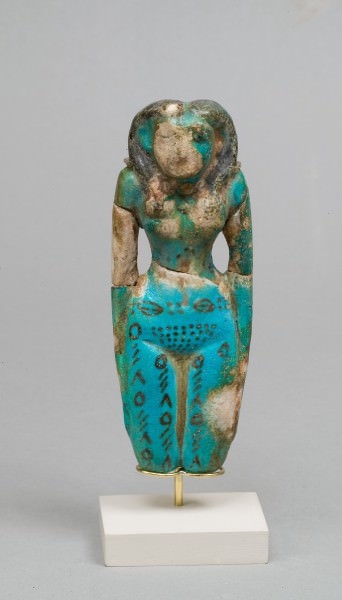
Egyptian Tattooed Figurine
An interesting difference, however, persists in the interpretation of Egyptian women's tattoos as opposed to those of other cultures: the tattoos of Egyptian women were - and are - regarded, when they are not simply ignored, as a symbol of the lower class and the mark of a dancing girl or prostitute without considering other possibilities. Further, even when such options for interpretation are allowed, they must argue against this earlier understanding.
THE CONFUSION
Early Egyptologists interpreted these tattoos according to their own understanding and prejudices concerning body art and, in examining the female mummies or feminine statuary, concluded that tattoos were worn by lower class prostitutes and dancing girls. Joann Fletcher, a fellow in the department of archaeology at the University of York, explains the confusion caused by the assessment of these early interpretations:
Because this seemed to be an exclusively female practice in ancient Egypt, mummies found with tattoos were usually dismissed by the (male) excavators who seemed to assume the women were of "dubious status," described in some cases as "dancing girls." The female mummies had nevertheless been buried at Deir el-Bahari (opposite modern Luxor) in an area associated with royal and elite burials, and we know that at least one of the women described as "probably a royal concubine" was actually a high-status priestess named Amunet, as revealed by her funerary inscriptions. And although it has long been assumed that such tattoos were the mark of prostitutes or were meant to protect the women against sexually transmitted diseases, I personally believe that the tattooing of ancient Egyptian women had a therapeutic role and functioned as a permanent form of amulet during the very difficult time of pregnancy and birth (1).
As more evidence came to light of tattooed women who were obviously priestesses and members of the court, the interpretation of "low class" tattooed women was somewhat revised to include the concept of cultic tattoos identifying a woman with the worship of Hathor. This understanding still carried with it a sense of eroticism and sexuality, however, which a present-day sensibility cannot seem to include in the definition of a priestess. Even in the modern-day "progressive" society, these ancient tattoos continue to be associated broadly with lower class members of society just as they were in the 19th century CE. Although the precise meanings of ancient Egyptian tattoos may be unclear, it seems evident that they had an array of implications and that women of many different social classes chose to wear them.
ALTHOUGH THE PRECISE MEANINGS OF ANCIENT EGYPTIAN TATTOOS MAY BE UNCLEAR, IT SEEMS EVIDENT THAT THEY HAD AN ARRAY OF IMPLICATIONS & THAT WOMEN OF MANY DIFFERENT SOCIAL CLASSES CHOSE TO WEAR THEM.
TATTOOS IN EGYPT IN THE MIDDLE KINGDOM
Tattoos in ancient Egypt may date back to the Pre-Dynastic Period (c. 6000 - c. 3150 BCE) based on evidence suggesting priestesses of the goddess Hathor would have had themselves so marked at that time. This claim is purely speculative, however. The most conclusive evidence of Egyptian tattoos found thus far dates the practice to the Middle Kingdom. Scholar Carolyn Graves-Brown writes how, "in 1891, two ancient Egyptian female mummies were uncovered from Middle Kingdom Deir el-Bahri; they bore tattoos of geometrically arranged dots and dashes" (113). She goes on to note that the tattoos on these women were the same as those found on Middle Kingdom fertility dolls and that, further, other female mummies were later discovered with similar markings.
The first female mummies uncovered were thought to be members of a king's harem and the others dancing girls or prostitutes. The male Egyptologists of the 19th and 20th centuries CE who were studying the mummies could not reconcile their understanding of a tattooed woman with one of high social standing and so tattoos were considered a mark of the lower classes. Even as recently as 1995 CE, the Egyptologist Joyce Tyldesley, whose treatment of tattoos and women is usually cogent and precise, writes, "Tattooing seems to have been confined to lower-class women" (160). Even though elsewhere in her work she acknowledges the variation in purpose of tattoos, the old stigma of body art carries on in the modern day and prevents people (often males) from interpreting these marks correctly.

Tattoos on the Mummy of Amunet
The claim that tattoos were only worn by prostitutes, dancing girls, and "lower-class women" becomes even weaker when one considers the case of Amunet, a priestess of the goddess Hathor from the 11th Dynasty of the Middle Kingdom. The mummy of Amunet, discovered with the others in 1891 CE by Egyptologist Eugene Grebaut at Deir el-Bahri, shows patterns of tattooed lines on her arms, thighs, and lower abdomen. These tattoos are interpreted by some scholars as fertility symbols and this claim is strengthened by other statues and mummies of tattooed women with the same kinds of marks on their body.
TATTOOS AS SYMBOLIC PROTECTION
These tattoos are thought to have been worn by a priestess to honor Hathor who, among her many duties, was also goddess of fertility. They were worn by other women as symbolic protection of a child in the womb and during child birth (although these are not mutually exclusive since priestesses could marry and have children). It has been noted that, as a woman's pregnancy developed and the belly swelled, the tattoos would have formed an intricate net design from one's lower back to just below one's navel, thus creating a distinctive protective barrier between the world and the unborn child. The protective aspect of the tattoo is further suggested by the figure of the protector-god Bes which women had tattooed on their inner thigh. Joann Fletcher notes:
This is supported by the pattern of distribution, largely around the abdomen, on top of the thighs and the breasts, and would also explain the specific types of designs, in particular the net-like distribution of dots applied over the abdomen. During pregnancy, this specific pattern would expand in a protective fashion in the same way bead nets were placed over wrapped mummies to protect them and "keep everything in." The placing of small figures of the household deity Bes at the tops of their thighs would again suggest the use of tattoos as a means of safeguarding the actual birth, since Bes was the protector of women in labor, and his position at the tops of the thighs a suitable location. This would ultimately explain tattoos as a purely female custom. (1)
No written work on the subject of tattoos survives from ancient Egypt and so interpretation is always speculative but it seems likely these tattoos were not simply adornments to make a woman more attractive to a man but served a higher purpose and, further, this purpose differed in different eras. Graves-Brown writes:
Much confusion also arises from the conflation of New Kingdom depictions of Bes on dancers' legs, with Middle Kingdom marks on the bodies of elite women and `fertility dolls'. All the evidence suggests that the only Egyptians in Dynastic Egypt to have tattoos were women and that these women would be elite court ladies and priestesses of Hathor perhaps decorated to ensure fertility, but not for the simple amusement of men. The origins and precise meaning of the tattoos, however, remain unclear (114).

Bes
Bes was primarily a protector god of pregnant women and children but was also associated with sexuality, fertility, humor, and joy in life. His image on a woman's thigh, therefore, could have many meanings within that context and should not be interpreted narrowly as only pertaining to sexual attraction. Tyldesley writes:
Some New Kingdom entertainers and servant girls displayed a small picture of the dwarf god Bes high on each thigh as a good luck symbol and a less than subtle means of drawing attention to their hidden charms. It has been suggested that this particular tattoo may have been the trade mark of a prostitute, but it seems equally likely to have been worn as an amuletic guard against the dangers of childbirth, or even as a protection against sexually transmitted diseases (160).
Egyptologist Geraldine Pinch also makes a point of the many ways in which Bes tattoos could be interpreted, writing, "Bes amulets and figurines were popular for over 2,000 years. Some women even decorated their bodies with Bes tattoos to improve their sex life or fertility" (118). It does seem clear that prostitutes wore tattoos based upon engravings and images such as those on the Turin Erotic Papyrus. The Turin Erotic Papyrus is a badly damaged document dating from the latter part of the New Kingdom (the Ramesside Period c. 1186-1077 BCE). Interpretations of the images range from claims it depicts a brothel, is a satire on sexual mores, or shows the sexual practices of the gods. The brothel interpretation goes directly to the Bes tattoo as a mark of prostitutes in that one of the women in the images is shown with the tattoo on her upper thigh.
It should be noted, however, that this interpretation is by no means accepted by every scholar who has worked with the papyrus nor should one assume that, because a prostitute wears a certain tattoo, piece of jewelry, or article of clothing, that those images, objects, and articles are synonymous with prostitution. Tattoos seem to have been worn by a number of different kinds of women for different reasons.
TATTOO ARTISTS & TOOLS
The British archaeologist WM Flinders Petrie (1853-1942 CE) discovered tattooing tools at Abydos and the town of Gurob dating to c. 3000 BCE and c. 1450 BCE respectively. The Abydos kit consisted of sharp metal points with a wooden handle while the Gurob kit's needles were bronze. Based upon the tattoos on the mummies, the tattoo artists used a dark pigment of dye, most likely black, blue, or green, with little variation.
THE TATTOO ARTISTS WERE MOST LIKELY OLDER WOMEN WITH EXPERIENCE UNDERSTANDING BOTH THE SYMBOLS & THE SIGNIFICANCE OF THE COLORS USED.
These colors symbolized life, birth, resurrection, the heavens, and fertility. Although the color black in the modern day is usually associated with death and evil, in ancient Egypt it symbolized life and resurrection. Green was commonly used as a symbol of life and blue, among its many meanings, symbolized fertility and birth. The tattoo artists were most likely older women with experience understanding both the symbols and the significance of the colors. Female seers were commonplace in ancient Egypt, as Egyptologist Rosalie David explains:
In the Deir el-Medina texts, there are references to 'wise-women' and the role they played in predicting future events and their causation. It has been suggested that such seers may have been a regular aspect of practical religion in the New Kingdom and possibly even in earlier times. (281)
One of the principal purposes assumed for the Egyptian tattoos is practical magic and it is probable that women were tattooed by the female seers for this reason. Images drawn for protection, whether on structures, objects, or people, was commonplace in Egypt. Mothers would frequently draw a picture of Bes on their children's palm and then wrap the hand in a blessed cloth to encourage pleasant dreams. Magical amulets, of course, were popular throughout Egypt in all periods. Magic was synonymous with medicine in Egypt and recognized as an important aspect of life. Magical images, then, tattooed on one's skin would hardly have been out of place no matter one's social status.
INTERPRETATION OF THE EGYPTIAN TATTOO
It would seem, then, that the tattoo served a primarily religious/protective purpose but this is not to suggest the images had no other. The mistake the early Egyptologists made was in assuming that women who had tattoos were solely dancing girls, entertainers, and prostitutes but it would equally be mistaken to assume tattoos were only worn for magical protection, by priestesses to honor their goddess, or for some therapeutic value. The dancer Isadora of Artemisia (c. 200 CE), for example, was known to have a tattoo of Bes on her thigh but had no children and was neither a prostitute nor a priestess.
Whether women were tattooed as early as the Pre-Dynastic Period in Egypt is unclear and any suggestions are purely speculative but, as time went on, the tattoo clearly became an important part of many women's lives. Interpretations of exactly what these tattoos meant to these women is also speculative as it seems clear that musicians and dancing girls did, in fact, have the same types of tattoos as priestesses.
The problem in the modern day is interpreting a "dancing girl" as a polar opposite to a "priestess" as though there were no hint of eroticism or sexuality to religion and no divine aspect to dancing or sex. Egyptian religion was fully integrated into the lives of the people and sexuality was as much a part of those lives as any other aspect. Perhaps, as in the present, the tattoo in ancient Egypt had many meanings aside from amuletic protection or cultic devotion. In the case of the image of Bes, a god known as well for encouraging merriment as providing protection, perhaps it was simply an expression of the joy one found in living one's life.
LICENSE
Article based on information obtained from these sources:with permission from the Website Ancient History Encyclopedia
Content is available under License Creative Commons: Attribution-NonCommercial-ShareAlike 3.0 Unported. CC-BY-NC-SA License